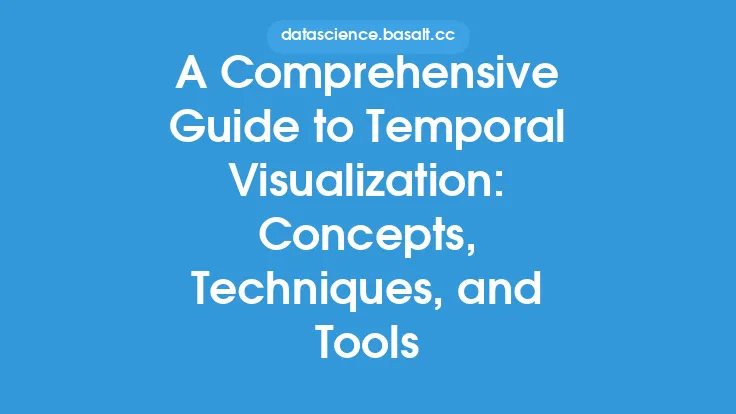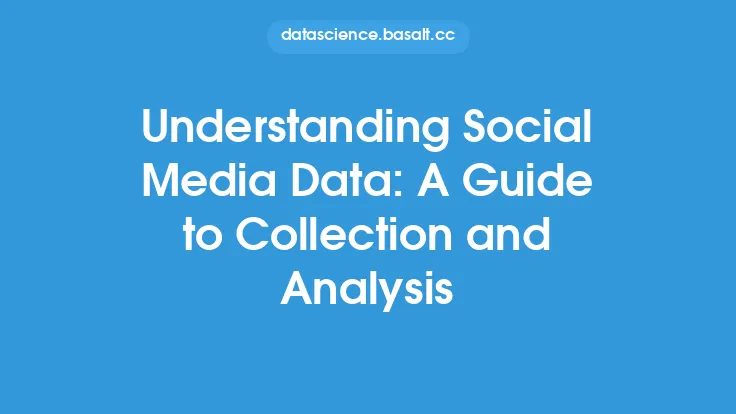Data wrangling is a crucial step in the data analysis process that involves cleaning, transforming, and preparing raw data for analysis. It is a time-consuming and labor-intensive process that requires a combination of technical skills, attention to detail, and domain knowledge. As a beginner, it can be overwhelming to navigate the complex world of data wrangling, but with the right concepts and techniques, you can become proficient in this essential skill.
Introduction to Data Wrangling Concepts
Data wrangling involves a range of activities, including data cleaning, data transformation, and data formatting. Data cleaning involves identifying and correcting errors, inconsistencies, and inaccuracies in the data. This can include handling missing values, removing duplicates, and correcting data entry errors. Data transformation involves converting data from one format to another, such as aggregating data, grouping data, and creating new variables. Data formatting involves preparing the data for analysis by selecting the relevant variables, handling data types, and creating data visualizations.
Data Wrangling Techniques
There are several data wrangling techniques that are essential for any data analyst. One of the most important techniques is data profiling, which involves analyzing the distribution of values in a dataset to identify patterns, trends, and anomalies. Another technique is data standardization, which involves converting data to a standard format to ensure consistency and comparability. Data normalization is also a critical technique, which involves scaling numeric data to a common range to prevent differences in scales from affecting analysis. Additionally, data transformation techniques such as aggregation, grouping, and pivoting are essential for preparing data for analysis.
Handling Missing Data
Missing data is a common problem in data wrangling, and there are several techniques for handling it. One approach is to impute missing values using statistical methods such as mean, median, or mode imputation. Another approach is to use machine learning algorithms to predict missing values based on patterns in the data. In some cases, it may be necessary to remove rows or columns with missing values, but this can lead to biased results if not done carefully. It is also important to consider the type of missing data, such as missing completely at random (MCAR), missing at random (MAR), or missing not at random (MNAR), as this can affect the choice of imputation method.
Data Transformation and Feature Engineering
Data transformation and feature engineering are critical steps in the data wrangling process. Data transformation involves converting data from one format to another, such as converting categorical variables to numeric variables. Feature engineering involves creating new variables from existing ones, such as creating interaction terms or polynomial transformations. These techniques can help to improve the quality of the data, reduce dimensionality, and improve the performance of machine learning models. Additionally, techniques such as feature scaling, feature selection, and dimensionality reduction can help to prepare the data for analysis.
Data Quality and Validation
Data quality and validation are essential steps in the data wrangling process. Data quality involves checking the data for errors, inconsistencies, and inaccuracies, while data validation involves checking the data against a set of rules or constraints. This can include checking for data types, formats, and ranges, as well as checking for consistency across different variables. Data validation can help to ensure that the data is accurate, complete, and consistent, which is critical for reliable analysis and decision-making.
Data Wrangling Tools and Software
There are several data wrangling tools and software available, including programming languages such as Python and R, data manipulation libraries such as Pandas and NumPy, and data visualization tools such as Tableau and Power BI. These tools can help to streamline the data wrangling process, improve efficiency, and reduce errors. Additionally, cloud-based data platforms such as AWS and Google Cloud provide a range of data wrangling tools and services, including data storage, data processing, and data analytics.
Best Practices for Data Wrangling
There are several best practices for data wrangling that can help to ensure high-quality results. One of the most important best practices is to document the data wrangling process, including the steps taken, the tools used, and the decisions made. This can help to ensure transparency, reproducibility, and accountability. Another best practice is to use version control systems such as Git to track changes to the data and code. Additionally, it is essential to test and validate the data wrangling process to ensure that it is working correctly and producing accurate results.
Common Data Wrangling Challenges
There are several common data wrangling challenges that can arise, including handling large datasets, dealing with missing or inconsistent data, and integrating data from multiple sources. Additionally, data wrangling can be time-consuming and labor-intensive, requiring significant resources and expertise. To overcome these challenges, it is essential to have a clear understanding of the data wrangling process, to use the right tools and techniques, and to have a robust quality control process in place.
Conclusion
Data wrangling is a critical step in the data analysis process that requires a combination of technical skills, attention to detail, and domain knowledge. By understanding the concepts and techniques of data wrangling, including data cleaning, data transformation, and data formatting, you can become proficient in this essential skill. Additionally, by using the right tools and software, following best practices, and being aware of common challenges, you can ensure high-quality results and reliable insights from your data. Whether you are a data analyst, data scientist, or business professional, data wrangling is an essential skill that can help you to extract insights from raw data and drive business decisions.





